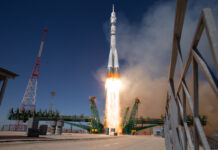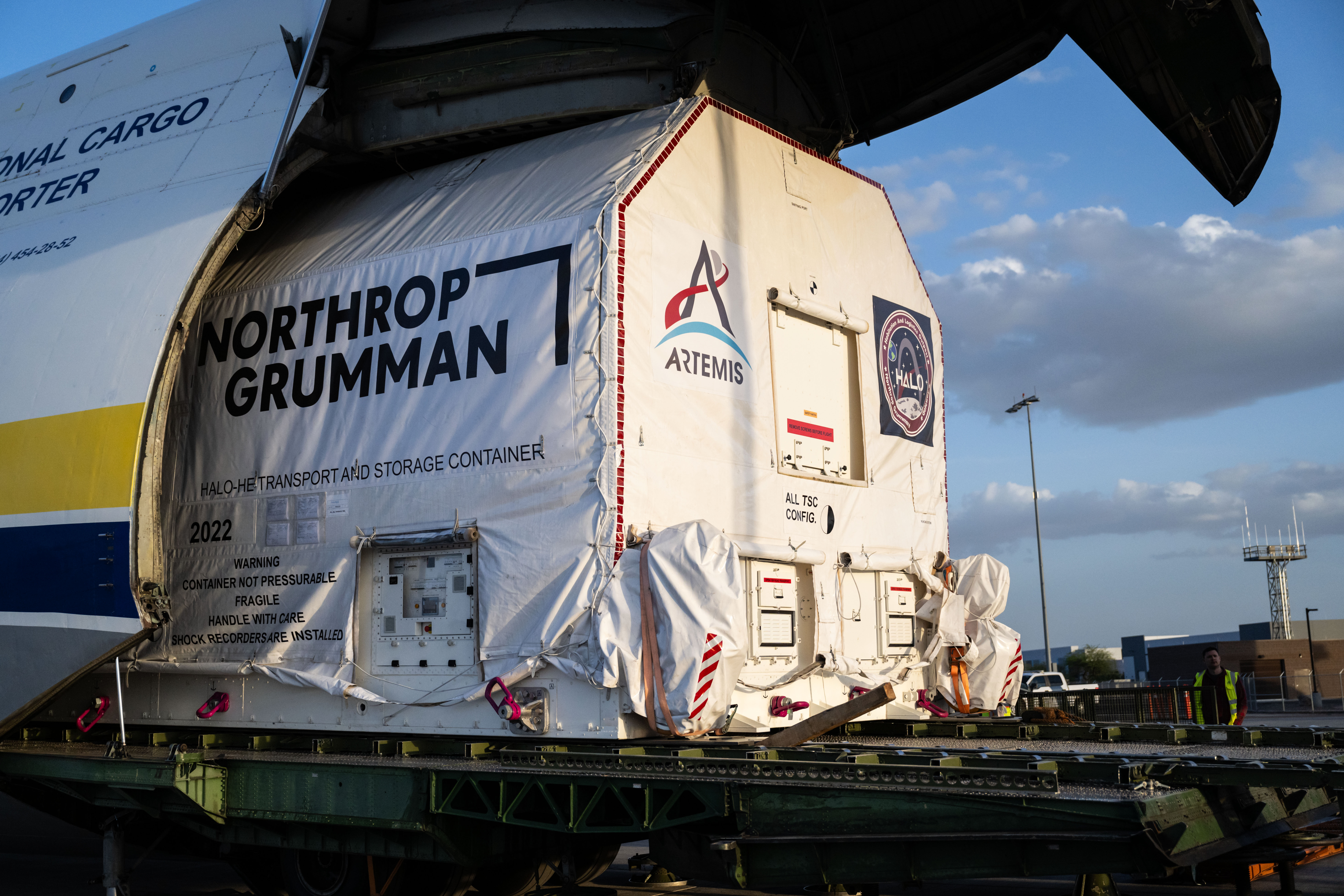From Italy to Arizona: A Key Component of Gateway Nears Launch
A significant milestone has been achieved in the world of space exploration as a crucial component of humanity’s first lunar space station, known as Gateway, has successfully arrived on American soil. This marks a pivotal step forward in NASA’s ambitious Artemis campaign, aimed at returning humans to the Moon and eventually paving the way for manned missions to Mars.
Gateway’s First Habitation Module Reaches the U.S.
The first pressurized module of Gateway, the Habitation and Logistics Outpost (HALO), has made its way to Arizona as of April 1. This foundational piece of the space station recently completed a transatlantic journey from its manufacturing site at Thales Alenia Space in Turin, Italy. Now in the United States, HALO will undergo its final preparations at Northrop Grumman’s integration and test facility located in Gilbert, Arizona. Following this, the module will be combined with Gateway’s Power and Propulsion Element at NASA’s Kennedy Space Center in Florida. Both modules are set to launch together aboard a SpaceX Falcon Heavy rocket.
The Role of HALO in Lunar Exploration
The HALO module is designed to support Artemis astronauts by providing essential living and working space. It will also serve as a hub for conducting scientific research and preparing for lunar surface missions. The module is equipped with systems for command and control, data handling, energy storage, and electrical power distribution. Additionally, it features thermal regulation capabilities and a communications system known as Lunar Link, which is provided by the European Space Agency (ESA). This high-rate communication system will ensure that astronauts can maintain contact and data exchange with Earth.
HALO is also equipped with docking ports for various visiting spacecraft, including NASA’s Orion spacecraft, lunar landers, and logistics modules. It will support both internal and external scientific payloads, allowing for significant research and technology demonstrations in the challenging environment of deep space.
International Collaboration and Technological Advancement
Gateway is being built with the collaboration of industry leaders and international partners, making it a truly global endeavor. The space station will not only support sustained exploration of the Moon but also serve as a platform for international scientific collaboration. Furthermore, it acts as a proving ground for developing the technologies and systems necessary for future human missions to Mars.
The development of Gateway represents a significant leap forward in our ability to explore deeper into space. By fostering international partnerships, this project enhances our collective knowledge and capabilities, making it a cornerstone of future space exploration efforts.
Implications for Future Space Exploration
The arrival of HALO in the United States is more than just a technical achievement; it underscores a broader vision of space exploration. The Gateway station will enable a continuous human presence in lunar orbit, providing invaluable insights into living and working in space environments far from Earth. This experience is critical as we look towards the next big leap in human space exploration: sending astronauts to Mars.
The development and deployment of Gateway and its modules highlight the innovative spirit and determination of the international space community. It reflects a commitment to push the boundaries of human exploration and to harness the potential of space technology for the betterment of humanity.
About the Artemis Campaign
NASA’s Artemis campaign is a comprehensive program aimed at returning humans to the Moon and establishing a sustainable human presence there by the end of the decade. Artemis is not only about lunar exploration but also serves as a stepping stone for future missions to Mars. By testing new technologies and systems on the Moon, NASA and its partners can better prepare for the challenges of longer-duration missions to the Red Planet.
Artemis missions will involve international collaboration, bringing together expertise and resources from countries around the world. This collaborative approach is essential for achieving the ambitious goals set out by NASA and its partners.
Conclusion
The arrival of HALO in Arizona marks a crucial advancement in the ongoing journey to explore and understand our lunar neighbor. As the space industry continues to evolve, projects like Gateway serve as a testament to human ingenuity and the power of international cooperation. With each step forward, we move closer to realizing the dream of a permanent human presence beyond Earth.
For more detailed information and high-resolution images of HALO, interested readers can visit NASA’s official website.
In conclusion, the journey of Gateway’s HALO module from Italy to Arizona signifies a monumental step in space exploration. It not only represents progress in the Artemis campaign but also highlights the importance of international collaboration and technological innovation in achieving the goals of lunar and, eventually, Martian exploration.
For more Information, Refer to this article.


































